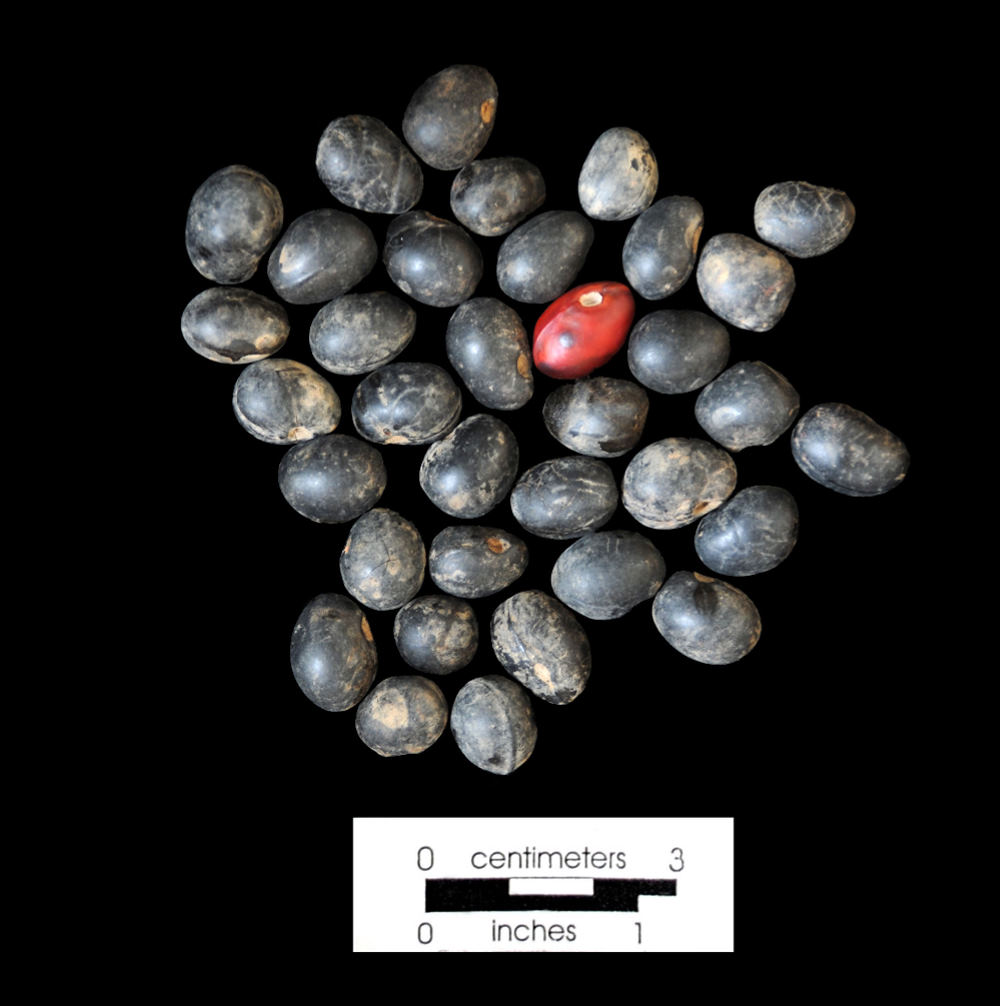
 |
| Texas Mountain Laurel seeds (Sophora secundi flora), or mescalbean, numbered 38. According to paleobotanist Phil Dering, the seeds are toxic although not hallucinogenic in the strictest sense of the term. "Mescalbeans contain an abundance of poisonous narcotic quinolizidine alkaloids, including cystine, N-methylcistine, and sparteine. The many physiological effects of mescalbean intoxication include muscle paralysis, nausea, evacuation of the bowels, seeing red, unconsciousness, and death. These alkaloids are not, however, hallucinogenic, rather, the mescalbean and its purgative effects, along with many other sensory inputs, helped the vision-seeker reach a culturally defined condition in which to receive visions. Because of its extreme physiological effects, the mountain laurel tree, or at least its seed, was likely viewed as a powerful plant worthy of trade and of decorating ritual clothing." To learn more about this mescal and ethnographic accounts of its use, see the entry by Dering about Mescalbean on TBH. |